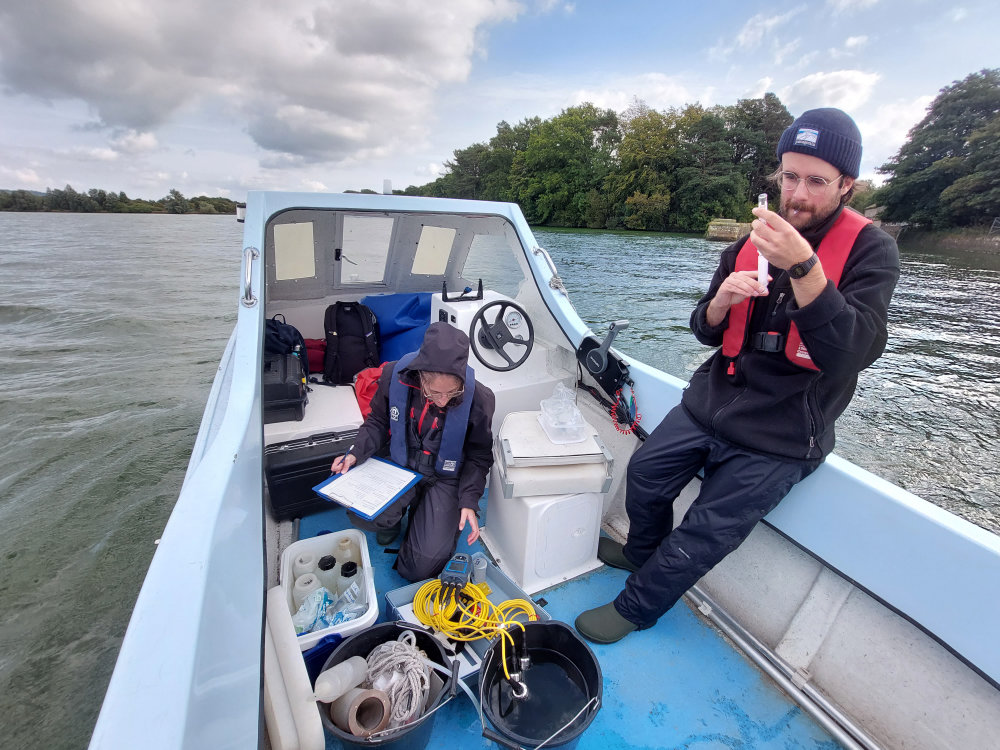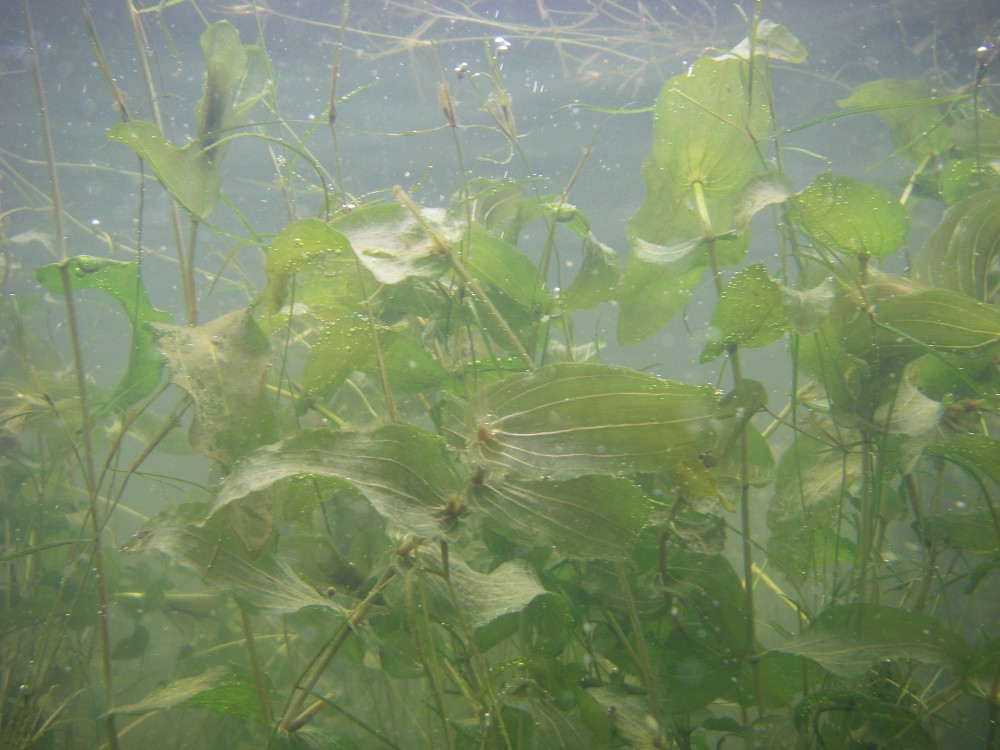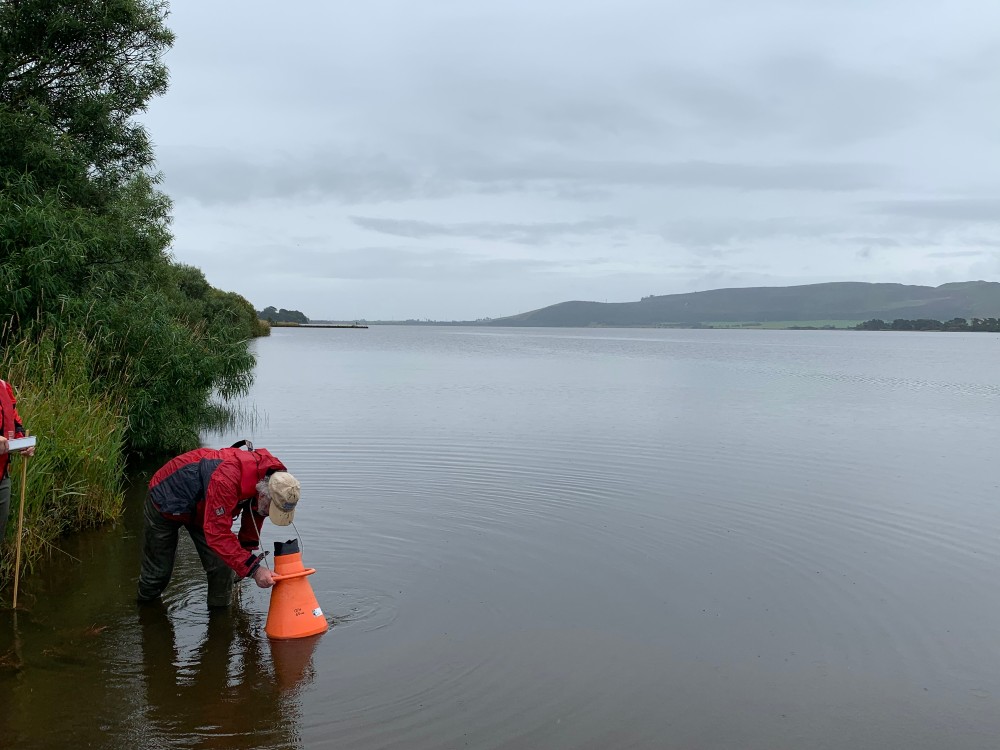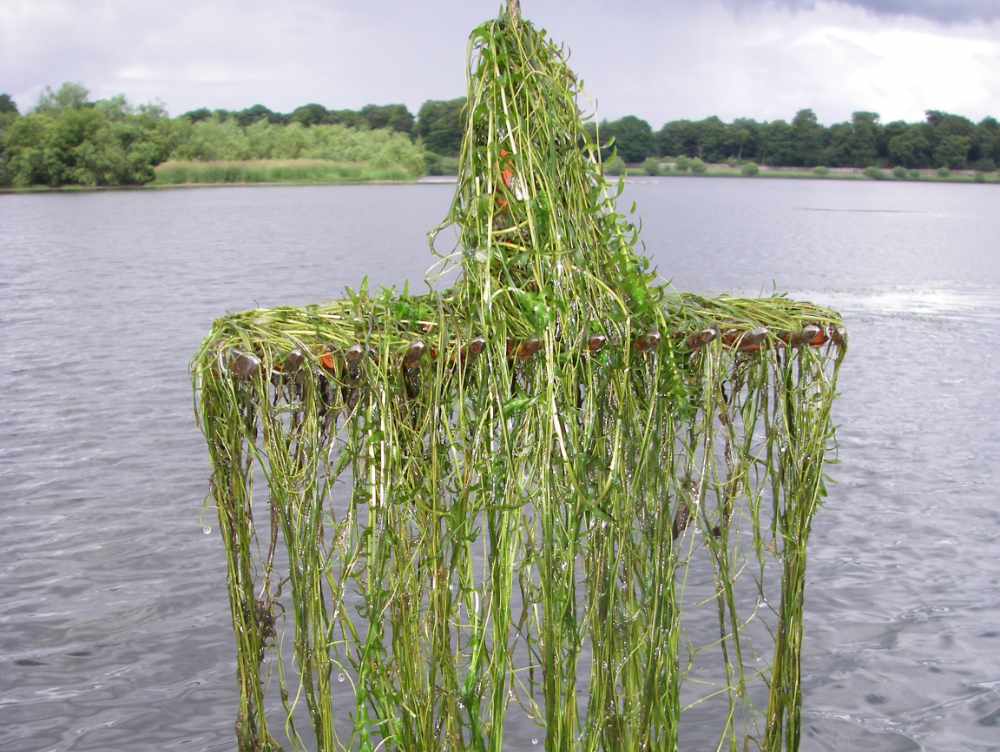Long term monitoring
Fortnightly monitoring of Loch Leven involves collecting water samples, phytoplankton and zooplankton samples, and measuring the following environmental conditions:
- Wind speed — measured on the Beaufort scale (force 0 (still) to force 12 (hurricane))
- Wind direction — N, NE, E, SE, etc.
- Surface water movement (calm, slight, moderate, rough)
- Cloud cover — measured in eighths (oktas); values range from 0 (clear sky) to 8 (complete cloud cover)
- Water depth (metres)
- Water clarity — measured with a Secchi disc (metres)
- pH, conductivity (μS cm-1) and dissolved oxygen (mg L-1 and % saturation)
- Water temperature (°C)
Water samples are collected from the Reed Bower and Sluices sampling sites. Unfiltered water is analysed for total phosphorus (TP) and total silicate (TSiO2) concentrations. Filtered water is analysed for total soluble phosphorus (TSP), soluble reactive phosphorus (SRP), nitrate (NO3), and silicate (SiO2) concentrations. The phytoplankton collected on the filter paper is analysed to determine the concentration of chlorophyll a in each sample.
In addition to the fortnightly monitoring, quarterly surveys of macroinvertebrates and annual assessments of aquatic plant (macrophyte) species composition and coverage are also undertaken.
In the following graphs, you can see the annual concentrations of a selection of determinands from the last few years, averaged over both sampling sites. The graphs also show the long term mean from 1968–2013.
Graph traces can be switched on and off by clicking on the names in the legend.
*Calculated from a dataset spanning 1968–2013.
Total phosphorus comprises total soluble (dissolved) phosphorus and particulate phosphorus. Particulate phosphorus comprises the phosphorus that is contained in, or attached to, particles such as algae and suspended sediments. An important part of soluble phosphorus is soluble reactive phosphorus, which is readily available to algae and enables them to grow rapidly.
Chlorophyll a is a green pigment found in all green plants, including phytoplankton (algae). It absorbs light energy from the sun and converts it into energy that the plant can use, using a process known as photosynthesis. Measurements of chlorophyll a indicate the amount of phytoplankton present in the water.
Water temperature affects the rate of biological processes, such as the growth, respiration, and reproduction of all organisms that live in the loch. It also affects the species composition and abundance of some of those organisms at certain times of year. Water temperature is one of the main environmental factors affected by climate change.
Dissolved oxygen concentrations indicate the amount of oxygen that is present in the water. The oxygen comes from the atmosphere or from aquatic plants. Some aquatic species, such as fish, are very sensitive to low levels of oxygen.
Water clarity, also known as Secchi depth, is a measure of how turbid the water has become due to phytoplankton growth or the resuspension of loch sediments under windy conditions. Turbid conditions prevent underwater plants from growing in deep water. Water clarity is only measured at Reed Bower.




